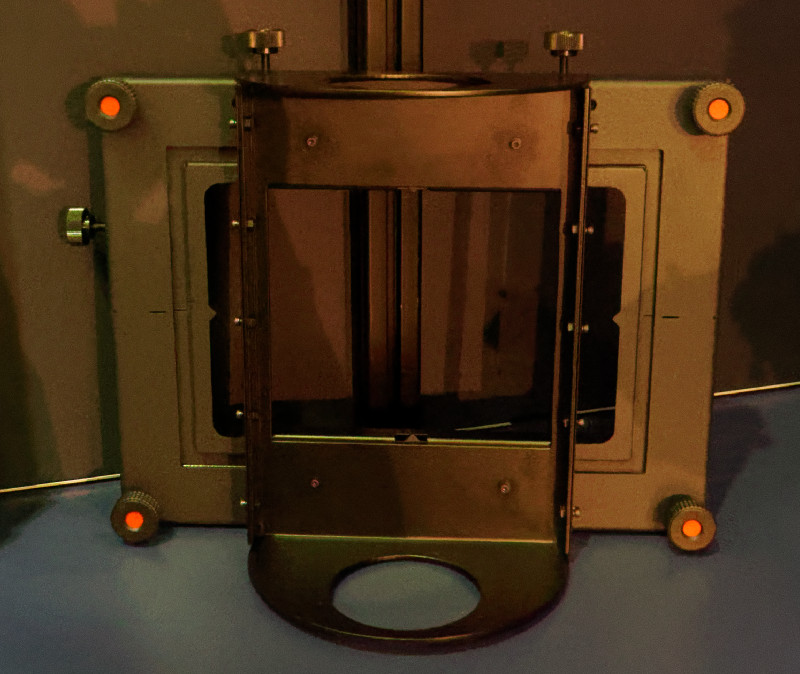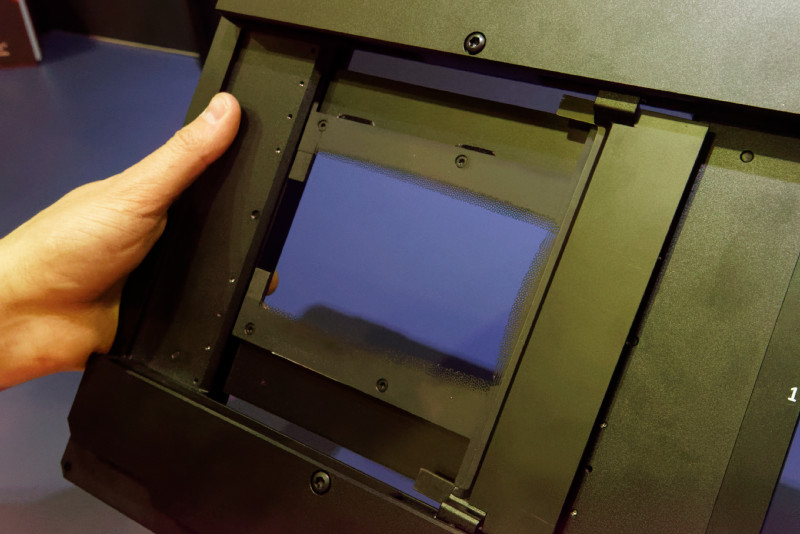Both Sony and Canon were keen to mention that they were using optical blending with their projectors that was developed by GBVI of the UK, an unusual accolade from two companies that are very proud of their visual quality.
We discuss the issues of digital or optical blending in our article on Domeprojection (Domeprojection Uses Analysis for Blend Masks), but GBVI uses optical methods. We were surprised that Canon had mentioned that the blender it had was ‘only delivered’ just before the show. We had assumed that the blender needed really only depended on the kind of lens being used.
However, it turns out that the blender also has to take into account the kind of light source used as this changes the uniformity and distribution of the light energy. That means that with different light sources (lamp, laser, laser phosphor and LED) all need different treatment. Even switching, for example, to use the Philips HLD green LED changes the light distribution, if you want a really good result. GBVI is working on a system for HLD at the moment.
The blenders also work differently depending on the F number of the lens used. In systems which use smaller sources and lenses with higher F numbers, it is challenging to develop solutions where the blender is soft enough. This is not a problem where the light sources are relatively large and the lens have smaller apertures. GBVI is looking for companies that are interested in working on this problem to develop good solutions.
 GVBI has a curved frame for blending the output from fisheye lenses. Image:Meko
GVBI has a curved frame for blending the output from fisheye lenses. Image:Meko
At the show, the company had a couple of new products. One is a curved holder that is designed for systems with fish eye projection lenses. Another version has the blend on a motorisable surface. That means that a digital blend can be used in a daytime mode, while it can be moved into position and an optical blend used in night time modes.
 GVBI’s adjustable mask can be withdrawn for digital blending. Image:Meko
GVBI’s adjustable mask can be withdrawn for digital blending. Image:Meko

